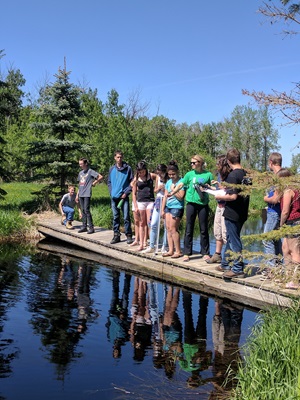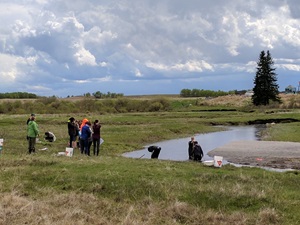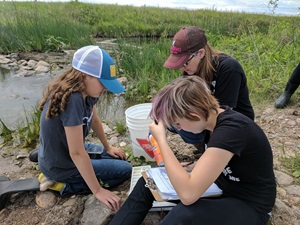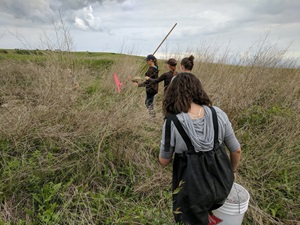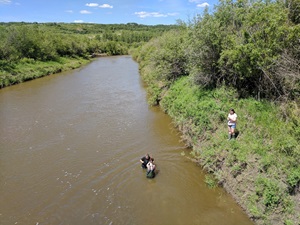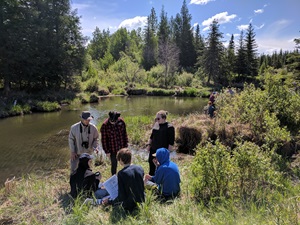A bug’s life and a watershed’s health, chronicled by citizen science
X-Stream Science program provides an experience-based environmental education for Alberta students
Citizen scientists may lack a formal education—but they make up for it in enthusiasm.
In east-central Alberta, the X-Stream Science program is wrapping up its second season of connecting students to their watershed through real-world science.
And the “citizen” component—that is, research and data collection by amateur enthusiasts—is key, says Nathalie Stanley Olson.
“Citizen science makes a difference. It often fills a gap of information,” says Olson, the education and outreach co-ordinator with the Camrose-based Battle River Watershed Alliance (BRWA), which runs the X-Stream Science program.
“The example I often use with students is Christmas bird counts, which have been going on for over 100 years,” she adds. “It’s citizen scientists—regular people who like birds—who drive out to the countryside, follow certain procedures, and write down all the birds they see.
“That data is actually some of the longest-term information we have on avian populations. It’s informed so much science, so many trends. And it’s all done by volunteers.”
Sponsored by Enbridge since its inception, X-Stream Science offers a hands-on learning experience for Grade 8 to 12 students on the importance of healthy watersheds.
To date, BRWA staff and more than 100 students from six partnering schools have tested 10 locations in the Battle River watershed for water quality and biological integrity—conducting water quality tests, and collecting and releasing all manner of aquatic invertebrates.
The X-Stream Science experience involves:
- A visit to the classroom by Olson and her colleagues to discuss the program and explain some of the testing procedures;
- A half-day field trip to a spot on the Battle River, or one of the creeks that feeds into it, to make note of insect life, and test water for pH, conductivity, turbidity and levels of dissolved oxygen; and
- Classroom data analysis and debrief.
Image gallery: X-Stream Science
Olson has already been contacted by a small handful of environmental non-profits, from Manitoba to B.C. to California, looking for more details on the program.
“This is experiential education. You can’t just tell people they should care about the environment. We need to give people an experience that forms a relationship, and then they will want to care,” says Olson.
“Getting out into the creeks for a project like this provides that experience.”
Enbridge is committed to improving quality of life in the communities near our operations and projects, including the nearby Line 3 Replacement Program, and we invest in programs that promote environmental stewardship, education, conservation and remediation.
Our ongoing sponsorship of X-Stream Science dates back to 2015, and includes a $15,000 contribution this year to fund student field trips, equipment purchases, and program development.
To date, X-Stream Science staff and students have discovered plenty of invertebrates, including damselflies, fresh-water shrimp, midges, aquatic worms, dragonflies, water mites, dobsonflies—and, in the spring of 2017, an extremely rare interloper.
“An incredible find—a tadpole shrimp. It’s an ancient creature—it hasn’t changed much since the Triassic period, and it’s very rare in our watershed,” says Olson. “One University of Alberta biologist told me: ‘I thought I had seen one here in the 1980s, but I had no evidence . . . and I’ve never heard of one here since.’ ”




